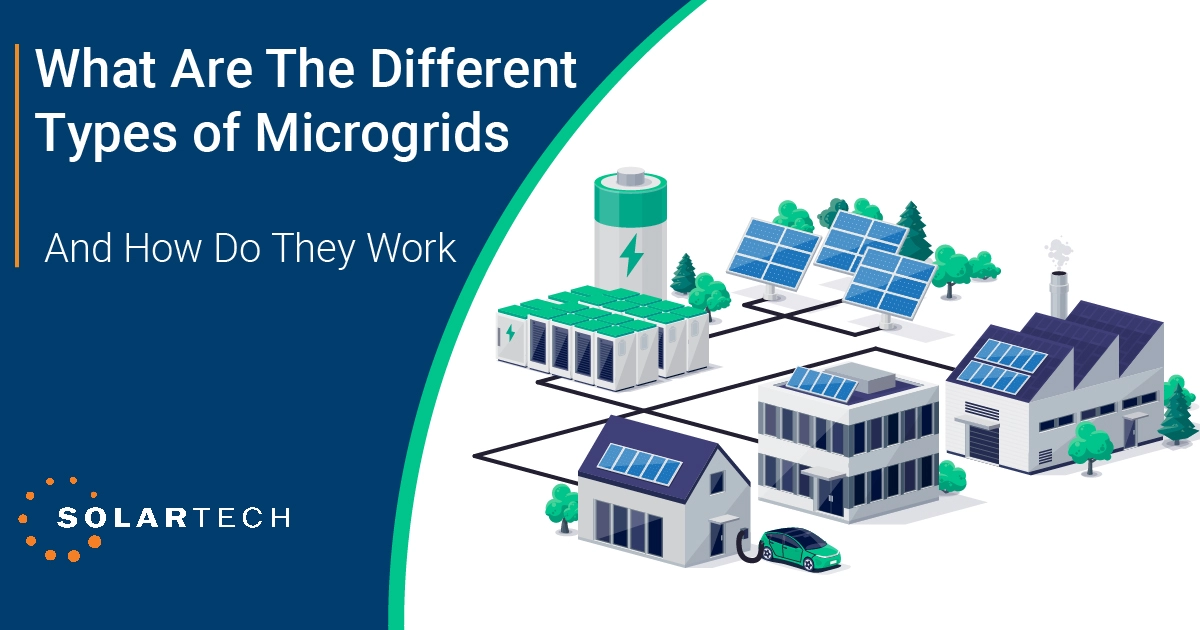What Are The Different Types of Microgrids, And How Do They Work?

What are microgrids?
The U.S. Department of Energy defines a microgrid as a controllable entity composed of interconnected loads and Distributed Energy Resources (DER) within specific electrical boundaries.
The main components of a microgrid are DER such as solar energy or wind turbines, energy storage in the form of batteries, and an intelligent controller that manages the energy resources and batteries with a high degree of sophistication. A microgrid controller is the brain of the entire system. The controller manages the various components to meet a customer’s energy goals effectively. Whether it is to cut demand costs or have electric reliability, intelligent software makes optimal decisions in using energy from the grid or to store in batteries.
What type of microgrids exist?
There are three main types of microgrids: grid-connected, remote, and networked.
Grid-Connected Microgrids
They have a physical connection to the utility grid via a switching mechanism and can disconnect into island mode and reconnect back to the main grid as needed. Grid-connected microgrids that are effectively integrated with the utility service provider can provide grid services and help address potential capacity, demand response, reliability, and voltage regulation on the utility grid. Grid-connected microgrids have gained immense popularity at hospitals, fire stations, and universities. With controllers tracking real-time utility prices and leveraging this variability, microgrids can consistently provide lower energy costs.
Remote Microgrids
Remote microgrids, also called off-grid microgrids, are isolated from the utility grid and always operate in island mode due to the lack of affordable and available transmission or distribution infrastructure nearby. These systems are best suited for powering operations in distant and hard-to-reach geographic locations. Customers have 100% electric reliability and interdependence from the central grid.
Networked Microgrids
Networked microgrids are composed of several separate DERs connected to the same utility grid circuit segment and serve a wide geographic area. These systems are typically managed and optimized by a control system to operate and coordinate each grid-connected or island mode at different tiers of hierarchy along the utility grid circuit segment. Networked microgrids are deployed for community microgrids and smart cities.
From resiliency to economics, microgrids benefit all stakeholders in a community. Customers can manage their energy costs while having insurance against grid outages. Critical infrastructure such as hospitals, police stations, and fire departments can ensure their ability to provide services for their communities. With heightened worries about grid reliability, the pace of installation has grown dramatically and will continue to see growth in the coming years.

